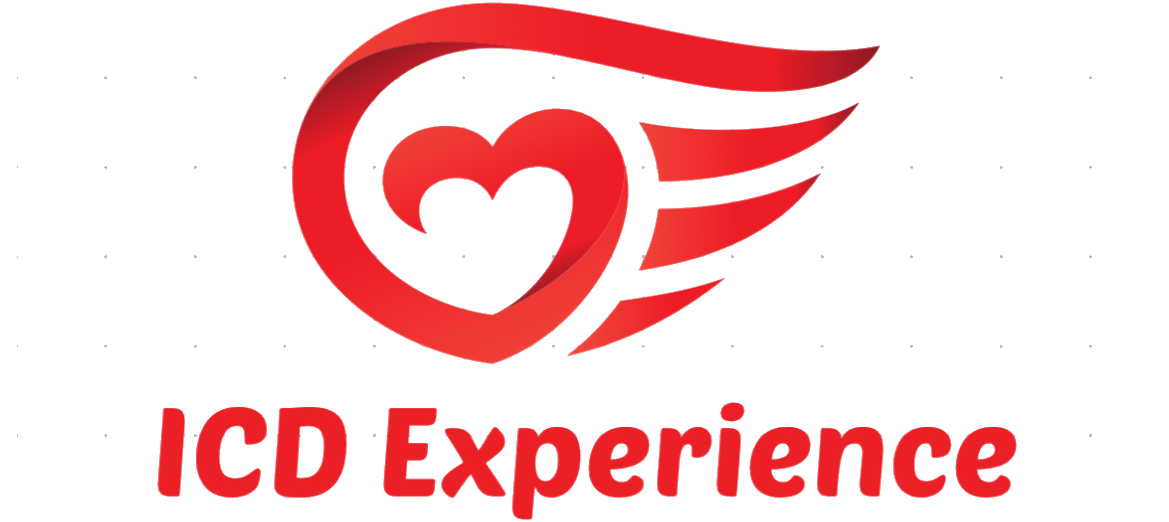Living with an implantable cardioverter-defibrillator (ICD) presents unique challenges, especially when participating in sports with an ICD. These devices are life-saving, designed to manage life-threatening arrhythmias. But having an ICD doesn’t mean you have to give up sports and exercise. Maintaining an active lifestyle is crucial for your overall health and well-being. With the right approach, you can safely enjoy the activities you love while participating in sports with an ICD.
Understanding ICDs and Sports Participation
An ICD is a small device implanted in the chest to monitor heart rhythms. It delivers electrical shocks to restore normal rhythms when necessary. ICDs are typically recommended for individuals at risk of sudden cardiac arrest due to life-threatening arrhythmias. The device works by continuously monitoring the heart’s electrical activity. If it detects a dangerously fast rhythm, it can deliver therapies such as anti-tachycardia pacing (ATP) or defibrillation shocks to correct the rhythm. For those interested in learning more, the American Heart Association provides comprehensive resources.
Before engaging in sports, it’s crucial to consult with your healthcare provider. They can assess your condition, evaluate the risks, and provide personalized recommendations based on your health status. It’s essential to understand your ICD’s settings and any potential limitations or precautions you should consider. This conversation will often include discussions about the intensity and type of activities that are safe and what to do if you experience symptoms during exercise.
Types of Sports and Their Considerations
Some sports and activities pose specific risks for individuals with ICDs, such as physical contact, trauma, or intense exertion. These could potentially trigger the device or cause harm. Understanding these risks can help you make informed decisions and take appropriate precautions to protect yourself and your device.
Low-Impact Sports
Low-impact sports like walking, swimming, and cycling are generally considered safe for individuals with ICDs. These activities offer cardiovascular benefits without putting excessive strain on the heart. Walking is versatile and accessible, improving cardiovascular health and joint flexibility. Swimming provides a full-body workout while minimizing impact on joints and the cardiovascular system. Cycling is excellent for improving endurance and cardiovascular fitness.
Moderate-Impact Sports
Moderate-impact sports such as jogging, tennis, and dancing may be suitable for some individuals. However, they require careful consideration and consultation with your healthcare provider. Jogging can be effective for building endurance but requires monitoring your heart rate to avoid overexertion. Tennis involves bursts of activity, improving coordination and reflexes, but requires pacing and attention to body signals. Dancing, whether in a class or social events, is fun and beneficial for cardiovascular health and balance.
High-Impact or Contact Sports
High-impact or contact sports, like football, basketball, and martial arts, pose higher risks due to potential chest trauma. The physical contact and high intensity of these activities could increase the likelihood of ICD activation or injury. If you’re interested in these sports, it may be beneficial to explore modified or non-contact versions that reduce the risk of physical impact.
Preparing for Physical Activities
Proper preparation is key when participating in sports with an ICD. Warming up before exercise and cooling down afterward are essential steps to prevent injury and promote cardiovascular health. Spend at least 5–10 minutes doing light aerobic activities and stretching before and after your workout. Warming up gradually increases your heart rate and circulation, preparing your body for more vigorous activity. Cooling down helps gradually return your heart rate to its resting state and aids in muscle recovery. Stretching can improve flexibility and reduce the risk of muscle strains or injuries.
Monitoring your heart rate during exercise helps you stay within a safe range and prevent overexertion. Wearing a heart rate monitor allows you to track your intensity level and ensure you’re exercising at a safe pace. Learn to recognize signs of exertion, such as dizziness, shortness of breath, or palpitations, which could indicate that you need to reduce the intensity or stop exercising altogether. If you experience any unusual symptoms, it’s important to stop exercising immediately and consult your healthcare provider.
Staying Safe During Exercise
Staying hydrated is crucial for maintaining optimal heart function and preventing complications. Drink water before, during, and after exercise to stay hydrated and avoid dehydration-related issues. Dehydration can strain your heart and increase the risk of arrhythmias, so it’s important to maintain adequate fluid intake, especially during hot or humid weather.
Pay attention to how your body feels during exercise. If you experience symptoms such as chest pain, lightheadedness, or unusual fatigue, stop exercising immediately and seek medical attention if necessary. Avoid pushing yourself too hard, especially if you’re new to exercise or haven’t been active for a while. Gradually increase the intensity and duration of your workouts to build endurance and strength safely. It’s better to start slow and build up gradually rather than risk injury or complications by doing too much too soon.
Modifying Activities for Safety
Consider wearing protective gear, such as chest protectors or padded vests, if you’re participating in activities where there’s a risk of chest trauma. This added layer of protection can help minimize the impact on your ICD and reduce the risk of injury. While this might seem cumbersome, the additional protection can provide peace of mind, allowing you to focus on enjoying your activity.
If certain exercises or movements are uncomfortable or risky, consider modifying them to suit your needs. For example, opt for seated exercises instead of standing ones or use resistance bands instead of free weights. Resistance bands offer an effective way to build strength and flexibility without placing excessive strain on the heart. Adapting exercises allows you to continue reaping the benefits of physical activity while ensuring safety and comfort.
Exploring Alternative Activities
Explore alternative activities that offer similar benefits without associated risks. For example, water aerobics can be a low-impact alternative to running, providing cardiovascular benefits with minimal joint stress. Yoga and Pilates are excellent for improving strength, flexibility, and balance while offering a calming effect on the mind and body. Tai chi is another gentle exercise that combines slow, deliberate movements with deep breathing, enhancing physical fitness and mental relaxation. We have specific examples in our recent blog about safe exercises to try!
Connecting with others who have ICDs and share similar interests in sports can be motivating and informative. Join support groups or online communities to exchange tips, experiences, and encouragement. Sharing experiences with peers can provide valuable insights, reduce feelings of isolation, and offer practical advice for managing an active lifestyle with an ICD.
Managing Anxiety and Building Confidence
Participating in sports with an ICD may trigger anxiety or fear of experiencing a cardiac event. Learning relaxation techniques, such as deep breathing, meditation, and mindfulness, can help manage anxiety and build confidence. Deep breathing exercises can calm the nervous system and reduce stress, making them a useful tool before, during, or after physical activities. Mindfulness encourages staying present in the moment and being aware of bodily sensations, helping you listen to your body and respond appropriately to any signs of distress.
Gradually increasing your activity level and setting achievable goals can boost your confidence and motivation. Celebrate your progress and accomplishments, no matter how small, to stay motivated and positive. Setting realistic goals provides a sense of purpose and direction in your fitness journey. Whether it’s completing a certain number of steps each day or participating in a local charity walk, having clear objectives can keep you focused and inspired.
Seeking Professional Support
If you’re struggling with anxiety or emotional challenges related to your ICD, consider seeking support from a mental health professional. Therapy or counseling can provide valuable tools and strategies for managing stress and improving mental well-being. A therapist can help you develop coping mechanisms for dealing with anxiety, provide support as you navigate lifestyle changes, and offer guidance on building resilience and confidence. For more information on managing anxiety with an ICD please visit here.
Success Stories and Inspirations
Many athletes with ICDs have successfully participated in sports at amateur and professional levels. Their stories serve as inspiring examples of resilience and determination, proving that participating in sports with an ICD is possible. For example, several well-known athletes, such as race car driver Eric McClure and basketball player Ronny Turiaf, have continued to excel in their sports careers after receiving an ICD. Their journeys highlight the importance of perseverance, adaptation, and a strong support system.
Hearing from individuals who have faced challenges and setbacks in their sports journey with an ICD can provide valuable insights and motivation for your own journey. By sharing experiences and strategies for overcoming obstacles, you can gain a deeper understanding of how to navigate your unique situation and find ways to continue doing what you love.
Setting Realistic Goals
Set realistic and achievable goals for your sports and fitness journey with an ICD. Whether it’s completing a 5K run or mastering a new skill, having clear objectives can keep you focused and motivated. Goals should be specific, measurable, attainable, relevant, and time-bound (SMART), allowing you to track your progress and celebrate milestones along the way. Setting short-term and long-term goals can help maintain momentum and provide a sense of achievement.
Conclusion
Participating in sports with an ICD is not only possible but also beneficial for your overall health and well-being. By understanding the risks, consulting with your healthcare provider, and taking necessary precautions, you can enjoy a wide range of physical activities safely. Remember to listen to your body, adapt your activities as needed, and seek support when necessary. With the right approach and mindset, you can continue to pursue your passion for sports and lead an active, fulfilling life.
Ultimately, living with an ICD requires a balanced approach to physical activity, where safety and enjoyment go hand in hand. Embracing an active lifestyle with the necessary precautions can enhance your quality of life, improve your physical health, and provide a sense of accomplishment and joy. By staying informed, being proactive about your health, and surrounding yourself with a supportive community, you can thrive in your sports endeavors and beyond.












